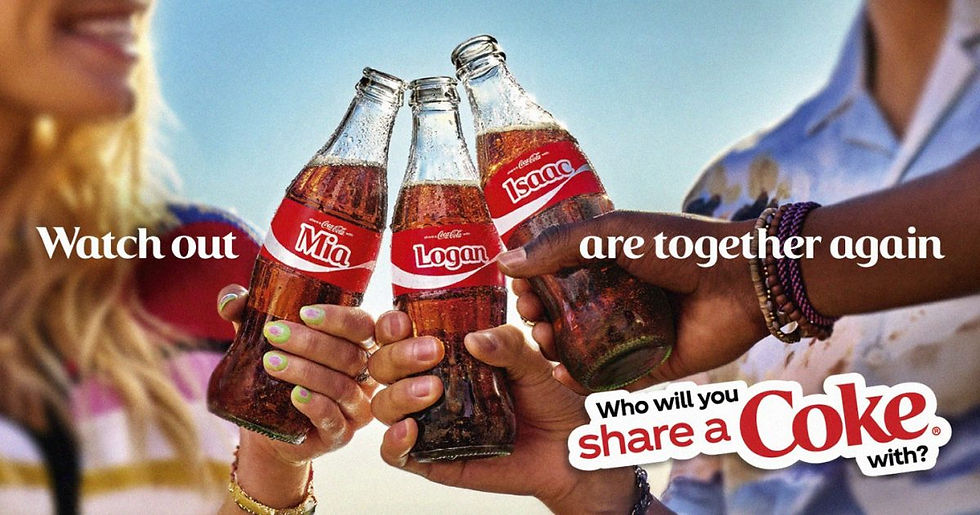The Power of Personalisation in Mass Marketing
- Kimaya Agrawal
- Aug 27
- 2 min read
"Make it simple. Make it memorable. Make it inviting to look at. Make it fun to read." — Leo Burnett
Coca-Cola has long been synonymous with mass-market dominance. Its identity was built on ubiquity— red cans, scripted typography, and a global advertising budget few could rival. But by 2011, that very ubiquity had begun to dull. The brand was recognised, but no longer remarked upon. Share a Coke, first launched in Australia, emerged as a strategic recalibration: not to increase awareness, but to renew attention.
Rather than launch a new product or celebrity endorsement, Coca-Cola replaced its logo on bottles with 150 of the most common names in the country. The move was deceptively simple but structurally significant. It shifted the product from a Coke to your Coke. For the first time, consumers could see themselves, or someone they cared about, on the packaging.
What followed was a measurable surge in engagement: over 250 million named bottles sold in Australia alone, a 7% increase in consumption among young adults, and a wave of user-generated content across social platforms. When the campaign expanded globally, names were localised and cultural nuances integrated, reinforcing the sense of personal relevance in each market.
The campaign functioned as identity activation. It moved the consumer from observer to participant. The personalisation tapped into core psychological levers: recognition, belonging, and social sharing. Bottles became props in moments of gifting, flirting, and nostalgia, transforming distribution points into interaction points.
The campaign also sidestepped the fatigue of traditional advertising. Instead of pushing a message, it embedded the brand into everyday rituals. The use of names created micro-targeting at scale, while the underlying product remained unchanged. This allowed Coca-Cola to retain production efficiency while delivering differentiated consumer value.
Share a Coke was a brand architecture strategy. It reframed a mass product as a personal experience, and did so without abandoning the brand’s core assets. By using packaging as media and names as emotional access points, Coca-Cola created a feedback loop between consumer identity and brand interaction.
For marketers, the lesson is clear: personalisation doesn’t always require deep data or complex tech. Sometimes, the most effective campaigns begin by asking not what the brand wants to say, but who the consumer wants to see.




Comments